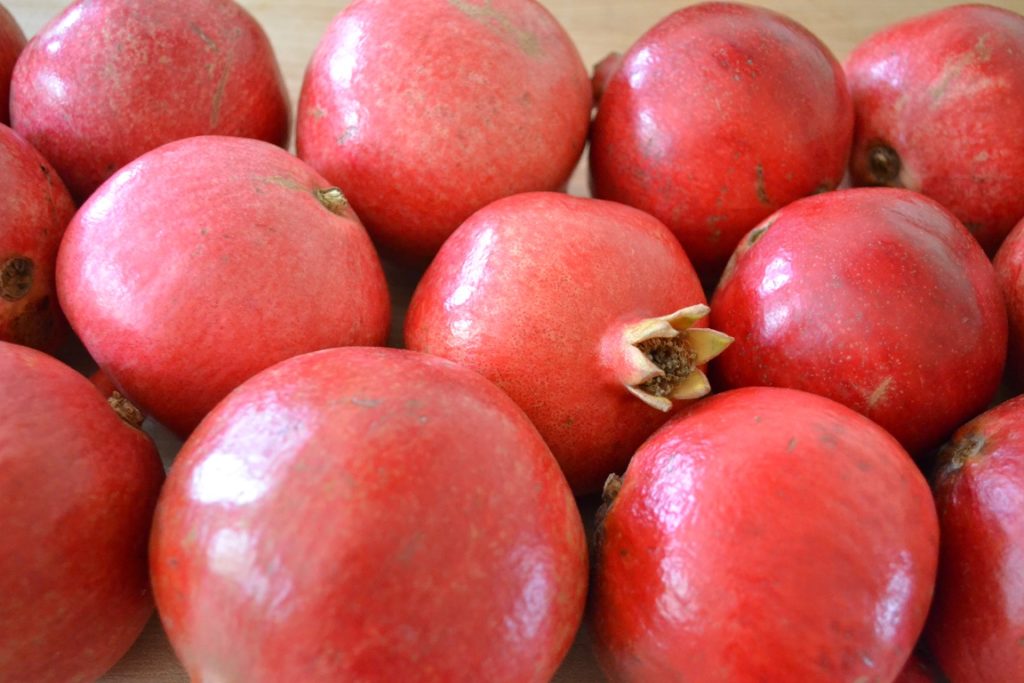 I have to say that I absolutely LOVE pomegranates. I always look forward to the month of November in anticipation of making and enjoying fresh pomegranate juice, which has a flavor unlike any other fruit I’ve tried before, along with its deep red color calling attention to its rich antioxidant content.
I have to say that I absolutely LOVE pomegranates. I always look forward to the month of November in anticipation of making and enjoying fresh pomegranate juice, which has a flavor unlike any other fruit I’ve tried before, along with its deep red color calling attention to its rich antioxidant content.
I wasn’t always this enthusiastic about pomegranates; it wasn’t until years into my raw food journey that I came to truly appreciate them. After all, pomegranates cannot be easily peeled and eaten or bitten into like so many of the more common fruits we enjoy. Some of you may know this from experience. The good news is that there are many ways to enjoy pomegranates, the first being juice.
Before we get started, let’s take a closer look at what a pomegranate actually is.
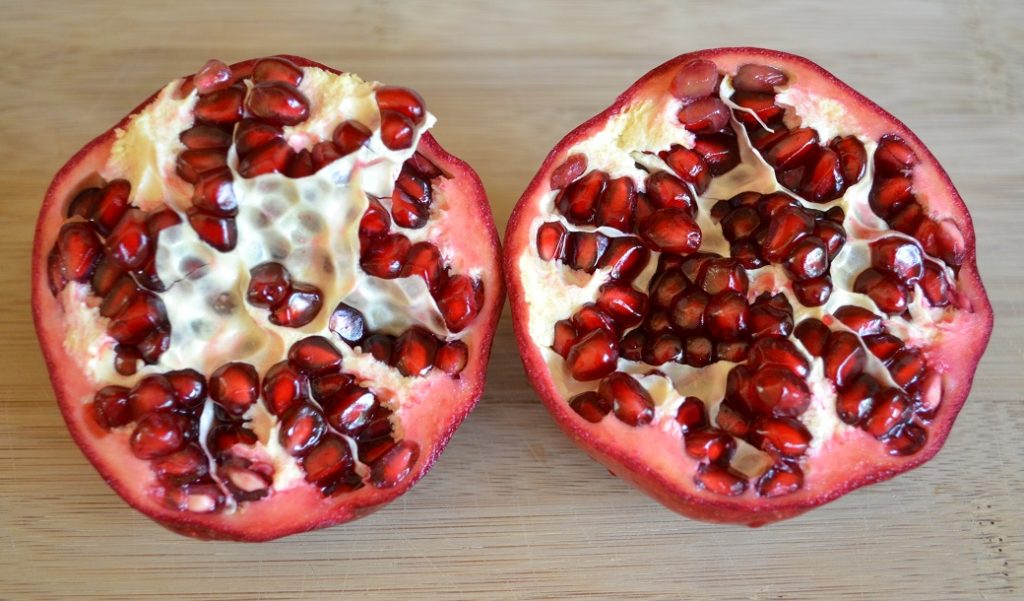 When you open a pomegranate, you will see tough fiber interspersed with pockets of individual seeds each surrounded by a dark red fluid-filled pouch. These are called arils. When one juices a pomegranate, they are releasing the dark red fluid from these arils. Please know that using a nice bamboo cutting board for pomegranate preparation may lead to stains. I learned this the hard way, and now I use a cutting surface that doesn’t stain.
When you open a pomegranate, you will see tough fiber interspersed with pockets of individual seeds each surrounded by a dark red fluid-filled pouch. These are called arils. When one juices a pomegranate, they are releasing the dark red fluid from these arils. Please know that using a nice bamboo cutting board for pomegranate preparation may lead to stains. I learned this the hard way, and now I use a cutting surface that doesn’t stain.
There are many techniques and juicers that can be used to make pomegranate juice, with our favorite method being the use of our manual citrus press.
 We find that using a press does not break down the white pomegranate seeds, but rather, separates the juice from the seeds and fiber, resulting in a dark red colored juice, which we love. We have found that the use of some electrical juicers breaks down the white pomegranate seeds, yielding a lighter tasting pink juice which is a combination of red pomegranate juice and broken down white pomegranate seeds. Our taste preference is the dark red juice.
We find that using a press does not break down the white pomegranate seeds, but rather, separates the juice from the seeds and fiber, resulting in a dark red colored juice, which we love. We have found that the use of some electrical juicers breaks down the white pomegranate seeds, yielding a lighter tasting pink juice which is a combination of red pomegranate juice and broken down white pomegranate seeds. Our taste preference is the dark red juice.
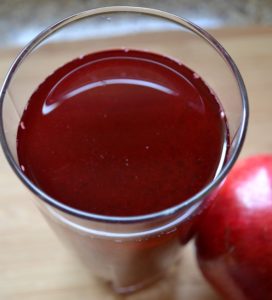 In order to get as much juice as possible out of our pomegranates, we cut the pomegranates into quarters. Cutting the pomegranates in half also works, but we have found that we get more juice if we cut the fruit in quarters. If you do not have a manual citrus press, a hand-held citrus juicer will work as well. Although, you may not get as much juice out of the pomegranates that you would with a citrus press. Before we got our citrus press, we used a hand-held citrus juicer and had good results. Be aware that juicing with either press method may lead to the red juice spraying onto surrounding counter tops, walls, and clothing. I wish I had known this the first time I juiced pomegranates.
In order to get as much juice as possible out of our pomegranates, we cut the pomegranates into quarters. Cutting the pomegranates in half also works, but we have found that we get more juice if we cut the fruit in quarters. If you do not have a manual citrus press, a hand-held citrus juicer will work as well. Although, you may not get as much juice out of the pomegranates that you would with a citrus press. Before we got our citrus press, we used a hand-held citrus juicer and had good results. Be aware that juicing with either press method may lead to the red juice spraying onto surrounding counter tops, walls, and clothing. I wish I had known this the first time I juiced pomegranates.
 We have found that juicing ripe pomegranates produces juice with notably less astringency than ripe pomegranates. How can you tell when a pomegranate is ripe? When the skin is cracked. We’ve rarely seen pomegranates with cracked skin for sale in stores; we’ve mostly seen them growing on trees in yards or at farmers markets. Does this deter us from purchasing pomegranates without cracked skins? No. We just realize that such pomegranates may have some astringency to their taste.
We have found that juicing ripe pomegranates produces juice with notably less astringency than ripe pomegranates. How can you tell when a pomegranate is ripe? When the skin is cracked. We’ve rarely seen pomegranates with cracked skin for sale in stores; we’ve mostly seen them growing on trees in yards or at farmers markets. Does this deter us from purchasing pomegranates without cracked skins? No. We just realize that such pomegranates may have some astringency to their taste.
The flavor of pomegranates can be strong regardless if fully ripe or not, so we often enjoy the combination of pomegranate juice with fresh squeezed orange juice. The orange juice counters the astringency of the pomegranate juice with some sweetness and makes for a nice base juice for our smoothies.
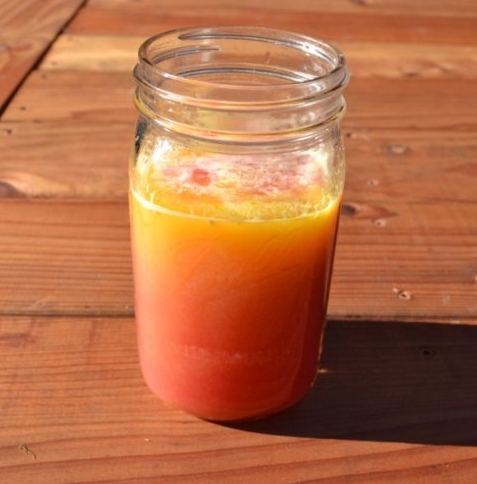 Here is a basic recipe for orange pomegranate juice:
Here is a basic recipe for orange pomegranate juice:
- Three medium Valencia oranges
- One medium pomegranate
We like to make smoothies with this juice recipe. Here is one of our favorites:
- 1 cup orange-pomegranate juice
- 2 cups chopped dandelion greens
- 1 cups dark cherries
- 3 bananas
- ½ cup mangoes
 I personally really enjoy this recipe with orange pomegranate juice, but I like straight pomegranate juice even more, especially in my morning smoothies. One of my favorite smoothies is my Ultra-Antioxidant Supercharged Energy smoothie that I enjoy a couple hours before I go on a run at this time of year. I even recently achieved two personal running records after eating this smoothie:
I personally really enjoy this recipe with orange pomegranate juice, but I like straight pomegranate juice even more, especially in my morning smoothies. One of my favorite smoothies is my Ultra-Antioxidant Supercharged Energy smoothie that I enjoy a couple hours before I go on a run at this time of year. I even recently achieved two personal running records after eating this smoothie:
- ½ cup pomegranate juice
- 2 cups chopped dandelion greens
- ½ cup blackberries
- ½ cup blueberries
- 3 bananas
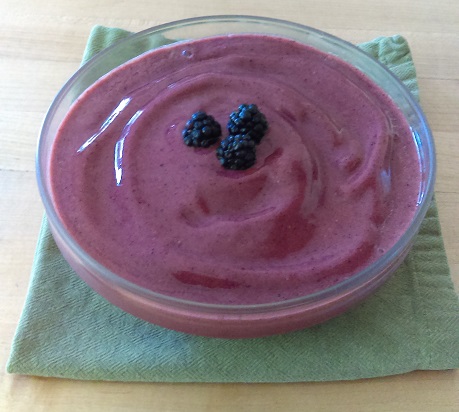 Here are some nutrient highlights of the ingredients used to create this smoothie:
Here are some nutrient highlights of the ingredients used to create this smoothie:
| Menu | Adult DRI | |
| Vitamin B1 | 0.55 | 1.1 – 1.2 mg |
| Vitamin B2 | 0.74 | 1.1 – 1.3 mg |
| Vitamin B3 | 4.84 | 14 – 16 mg |
| Folate | 230 | 400 mcg |
| Vitamin C | 120 | 75 – 90 mg |
| Vitamin E | 7 | 15 mg |
| Calcium | 277 | 1000 – 1200 mg |
| Iron | 6 | 8 – 18 mg |
| Magnesium | 188 | 310 – 420 mg |
| Potassium | 2543 | 4700 mg |
| Zinc | 2.5 | 8 – 11 mg |
Given that the number of calories in this smoothie is 672, this nutrient profile is impressive!
In addition to pomegranate juice, there are so many additional ways to enjoy pomegranates around the holidays. I was recently asked how to remove the seeds from pomegranates to use in recipes. So, here are the steps I use:
First, I change into clothing that I am not concerned with if I get stained, then I score the middle of the pomegranate:
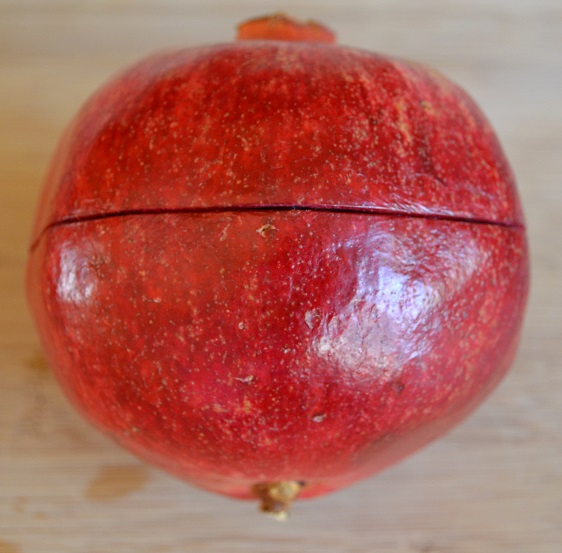 Then, I separate the two halves of the pomegranate by essentially tearing the two halves apart over a bowl to catch any juice that comes out in the process. Inserting a spoon into the score can assist with separating the two halves.
Then, I separate the two halves of the pomegranate by essentially tearing the two halves apart over a bowl to catch any juice that comes out in the process. Inserting a spoon into the score can assist with separating the two halves.
 To get the fluid-filled seeds (arils) out of the halves, I turn the halves inside out.
To get the fluid-filled seeds (arils) out of the halves, I turn the halves inside out.
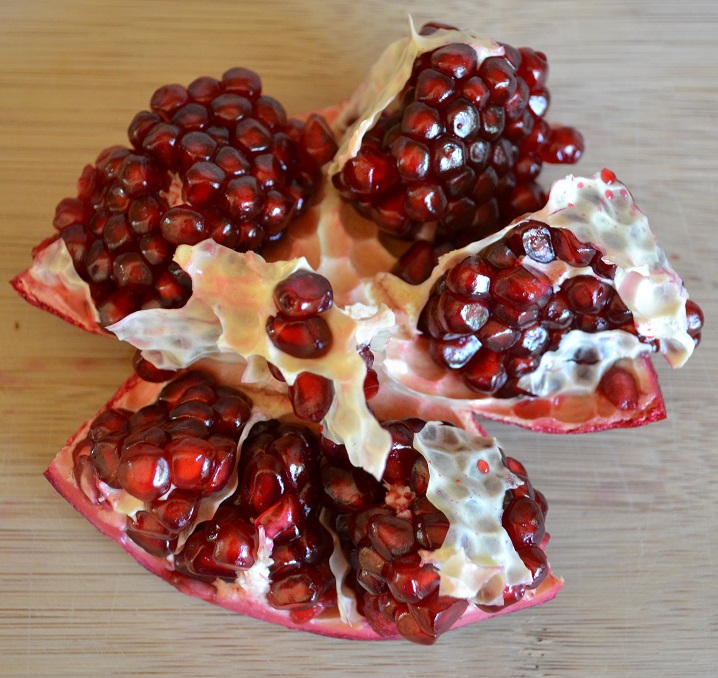 And then I remove the arils by hand over a bowl filled with water. The arils will sink to the bottom of the bowl and the pith will float.
And then I remove the arils by hand over a bowl filled with water. The arils will sink to the bottom of the bowl and the pith will float.
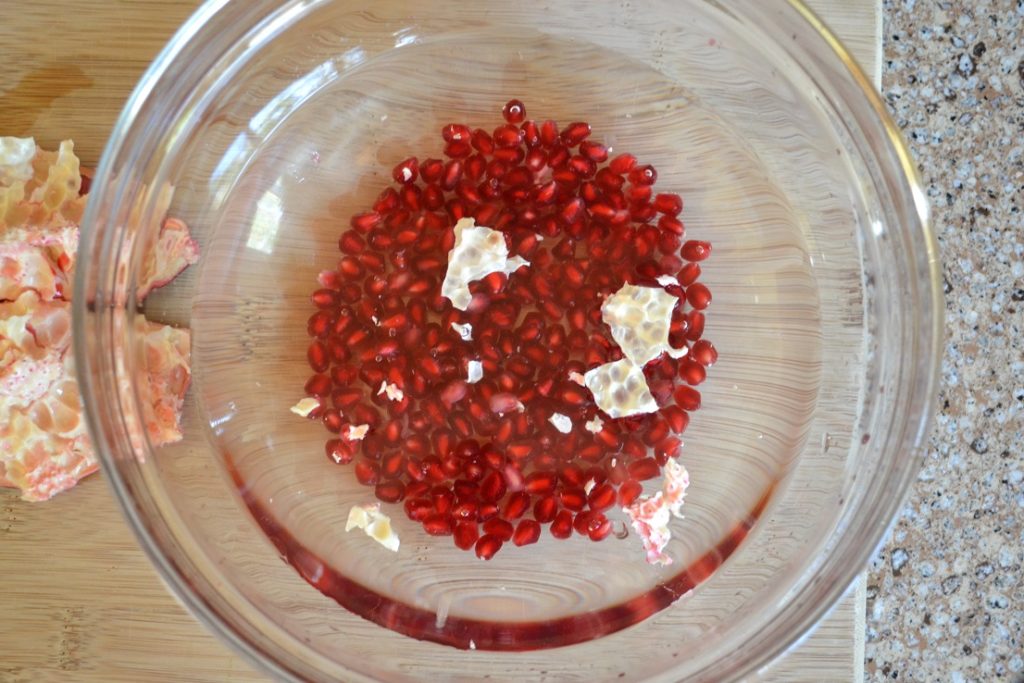 I then remove the floating pith pieces and drain off the water from the arils. Here is a photo of the drained arils:
I then remove the floating pith pieces and drain off the water from the arils. Here is a photo of the drained arils:
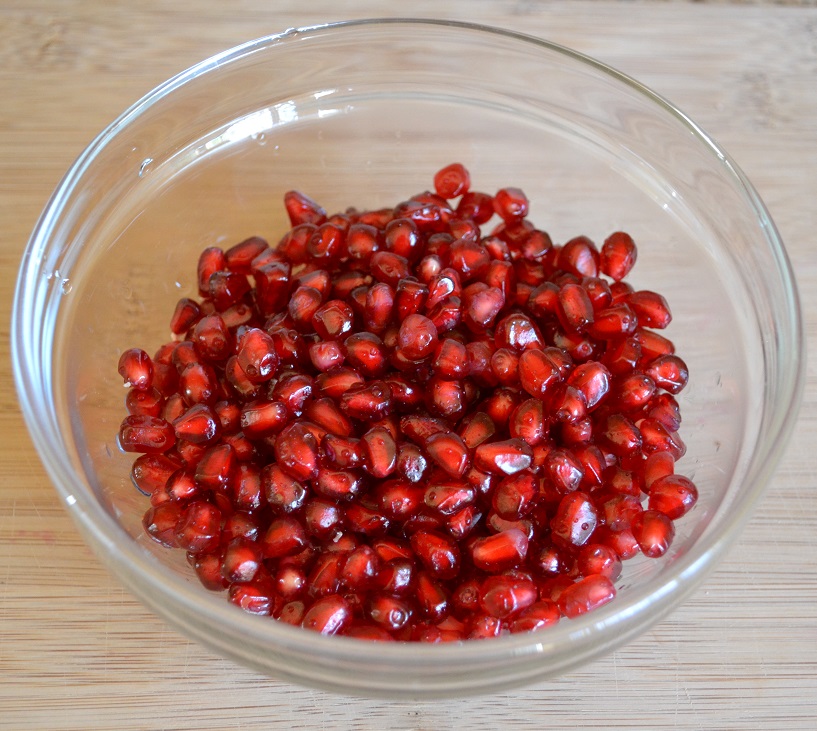 Now, what do we do with these pomegranate arils? We love them in salads.
Now, what do we do with these pomegranate arils? We love them in salads.
Many people ask us how much salad we eat regularly and are surprised when they see the actual amount. Over my almost 28 years of being on this raw food path, my salads seem to get bigger every year. When I first started, I thought for sure that I would be hungry on raw food because my vegetable intake reference point was a small dinner-sized salad with about a cup or two of lettuce, half of a tomato, and a slice of onion drenched in some type of dressing. After shifting to a more raw plant-based diet, my salads obligatorily grew significantly in size. Now my salads look more like this:
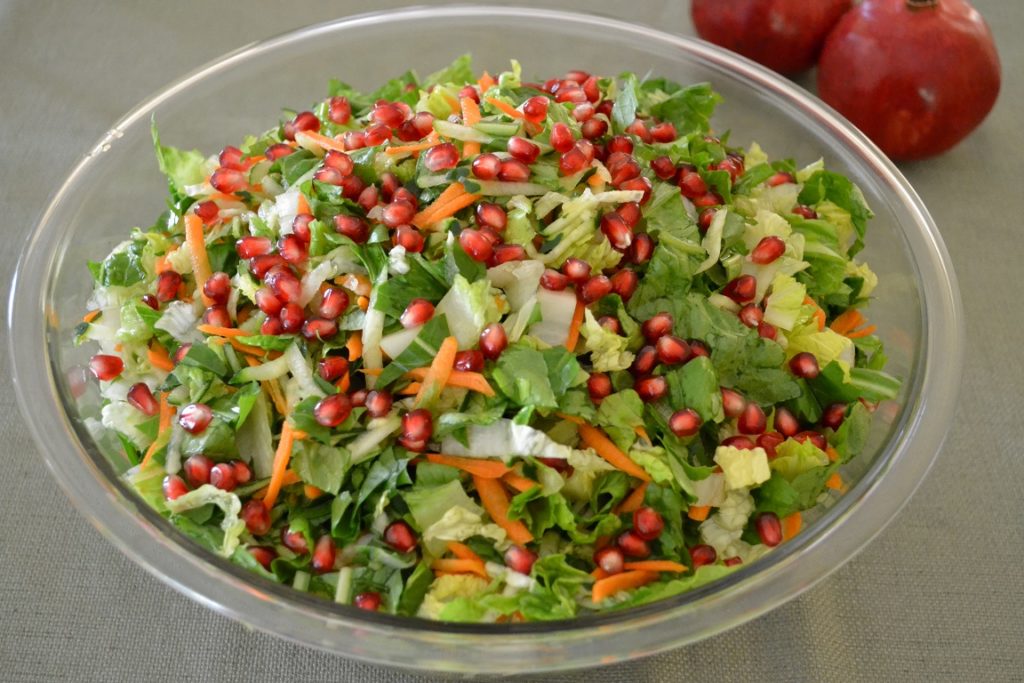 Here are the ingredients in the salad:
Here are the ingredients in the salad:
- 5 cups shredded cucumber
- 3 cups shredded carrots
- 10 cups chopped or torn romaine lettuce
- 3 cups chopped or torn dandelion greens
- ½ cup pomegranate arils (when available)
I love dandelion greens, but I know their taste is not for everyone. Nutrient-wise they are a powerhouse, but there certainly are other leafy green choices that do not have as much of an ‘acquired’ taste, such as frisée greens, escarole, kale, and others.
Here is the nutrient content of the ingredients of the salad:
| Menu | Adult DRI | |
| Vitamin B1 | 1.2 | 1.1 – 1.2 mg |
| Vitamin B2 | 1.3 | 1.1 – 1.3 mg |
| Vitamin B3 | 7.4 | 14 – 16 mg |
| Folate | 890 | 400 mcg |
| Vitamin C | 233 | 75 – 90 mg |
| Vitamin E | 10 | 15 mg |
| Calcium | 684 | 1000 – 1200 mg |
| Iron | 13 | 8 – 18 mg |
| Magnesium | 266 | 310 – 420 mg |
| Potassium | 4302 | 4700 mg |
| Zinc | 5 | 8 – 11 mg |
Given that this salad has 602 calories, this nutrient profile is impressive with the DRI being achieved or exceeded for a number of the nutrients!
There are many types of dressings you can add to this salad; we’ve found sweet dressings to balance out the bitterness of the dandelion greens. One of our favorites is tomato, sundried tomato, chia seeds, and dates. Here is a link to a dressing that we enjoy on this salad.
Nutrient-wise, pomegranates are rich in folate, potassium, and are appreciated for their notable anthocyanin content and the polyphenol ellagic acid, which has been studied for its antioxidant and antiproliferative properties.
How do you enjoy pomegranates? Please post in the comment section below.
We wish you all a joy-filled and healthy holiday season!
One of the best ways to keep in touch with us is to join our email list. You’ll receive a free copy of Our Top 12 Strategies for Long Term Success on A Raw Plant-Based Diet eBook along with regular information about raw food and plant-based diets and periodic promotions for our classes, events, and other offerings!
3 thoughts on “Our Favorite Fruit for the Holidays and How We Enjoy It…”
Comments are closed.


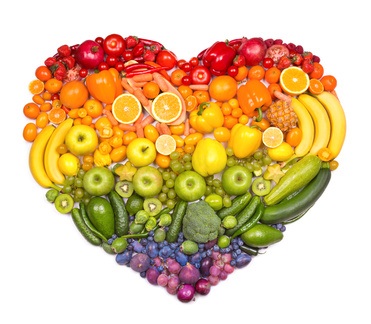
Thank you so much for this informative article! I love pomegranates and use them in many delicious recipes, yes, beginning with juices! I feel inspired by your smoothie and salad recipes! 🌺
Those smoothies look awesome! Decadent and indulgent yet wholesome! I love what you say about salads getting bigger every year too - can relate and I think I just grow to love the food more!
Thank you for this excellent blog, so much good information and deliciousness!
Hello dr Karin Dina, Thank you for all theses explanations! I do love pomegranates . I have several in my kitchen just now. When I remove the seeds, I kind of repaint my kitchen!!! I will try in water 🙂